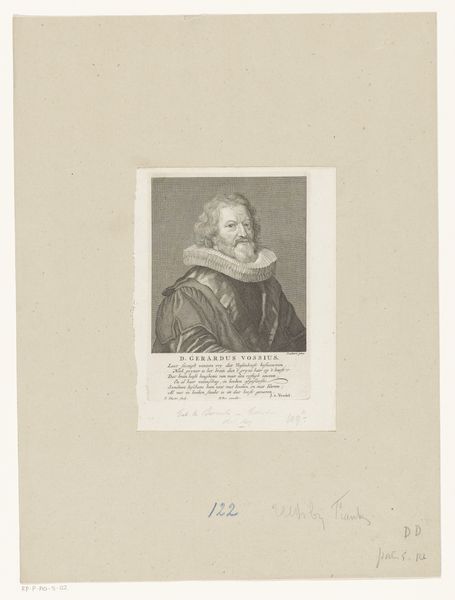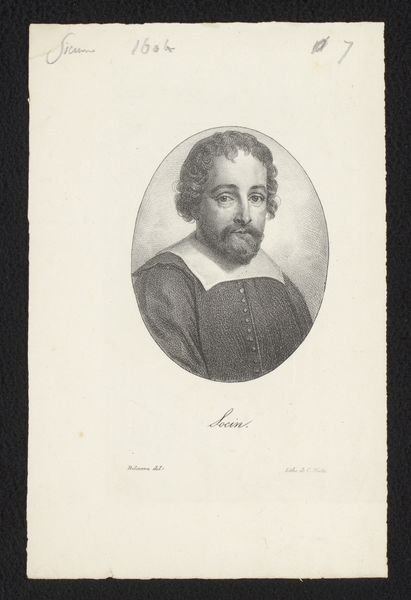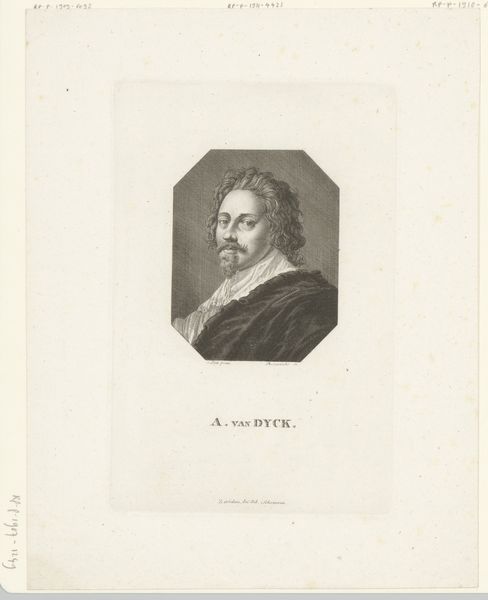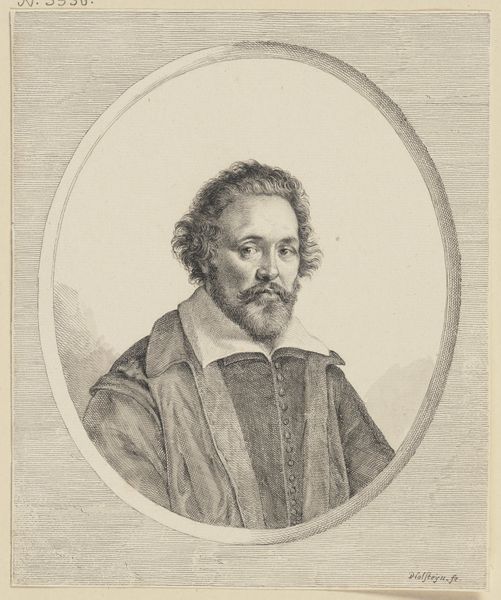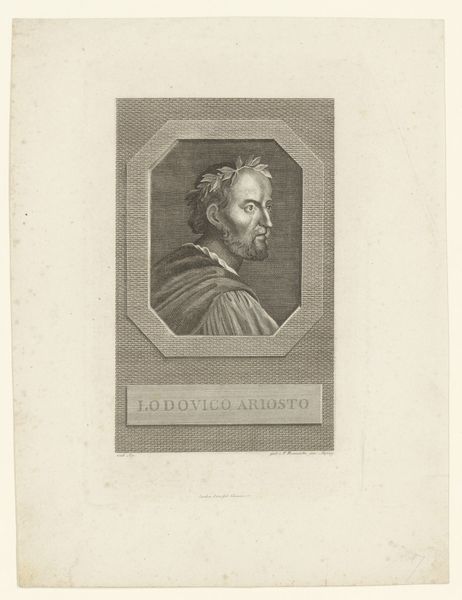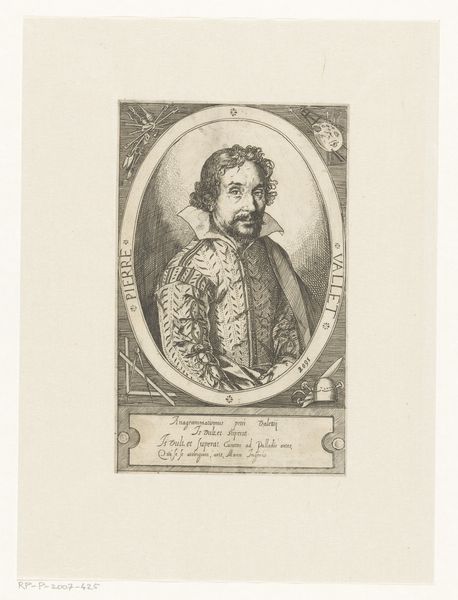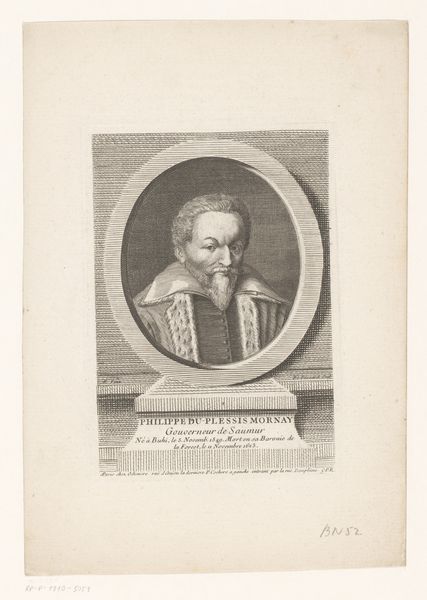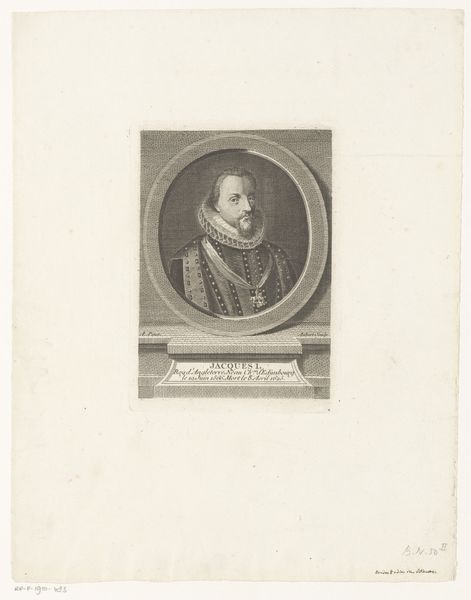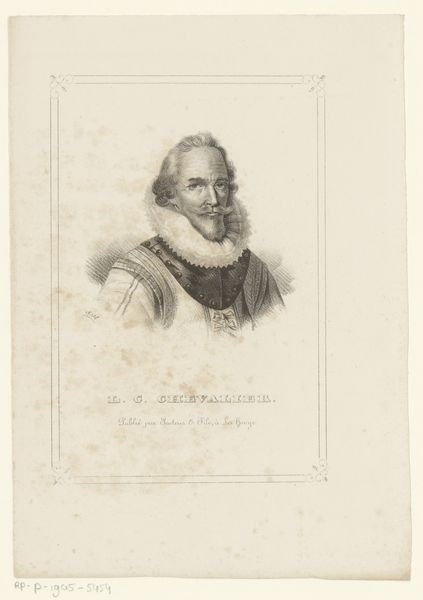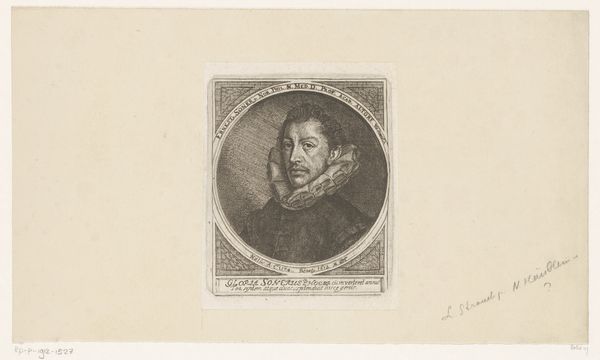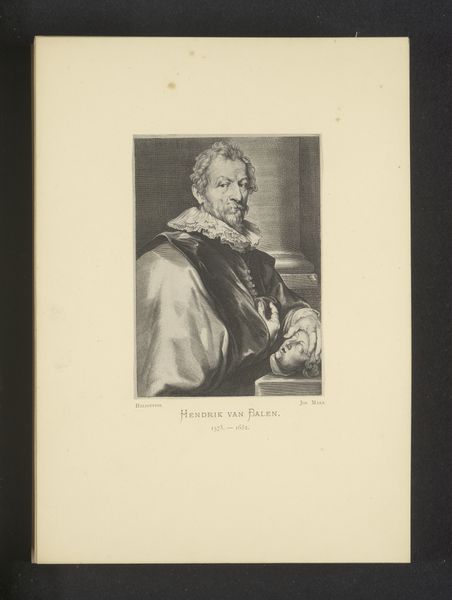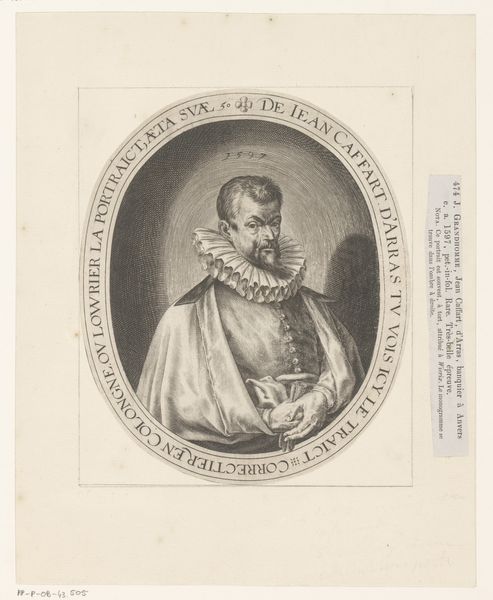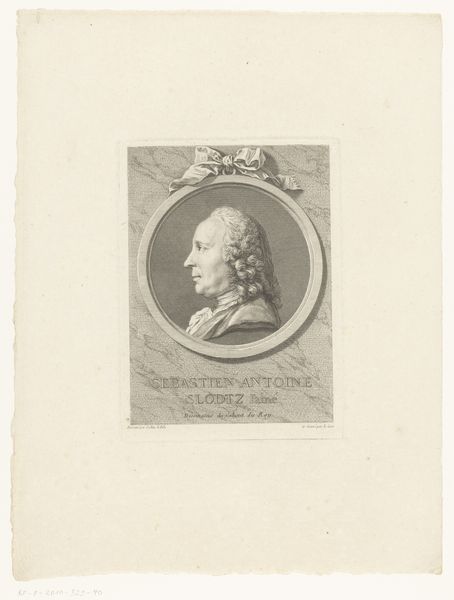
print, engraving
#
portrait
#
baroque
# print
#
old engraving style
#
portrait reference
#
portrait drawing
#
engraving
Dimensions: height 105 mm, width 102 mm
Copyright: Rijks Museum: Open Domain
This print, “Portret van Bartholomeus Spranger”, was made by Johann Georg Waldreich sometime before 1680. It’s an engraving, meaning that the image was incised into a metal plate, likely copper, then inked and printed onto paper. The linear quality we see here is characteristic of engraving, giving a crisp, precise feel. Waldreich skillfully uses cross-hatching to create tonal variation, building up the shadows to model Spranger's face and clothing. Look closely, and you'll notice how the varying depths and densities of the engraved lines create a sense of volume and texture, from the soft ruff around Spranger’s neck to the glint of his chain. Engraving was a highly skilled craft, requiring years of training. It was also labor-intensive. The engraver had to be precise, as any mistakes would be difficult to correct. In its time, this kind of printmaking was the engine of visual culture. These images were consumed en masse. Thinking about the amount of work involved helps us appreciate not only the skill of the artist, but also the broader social context in which this image was produced and consumed.
Comments
No comments
Be the first to comment and join the conversation on the ultimate creative platform.
